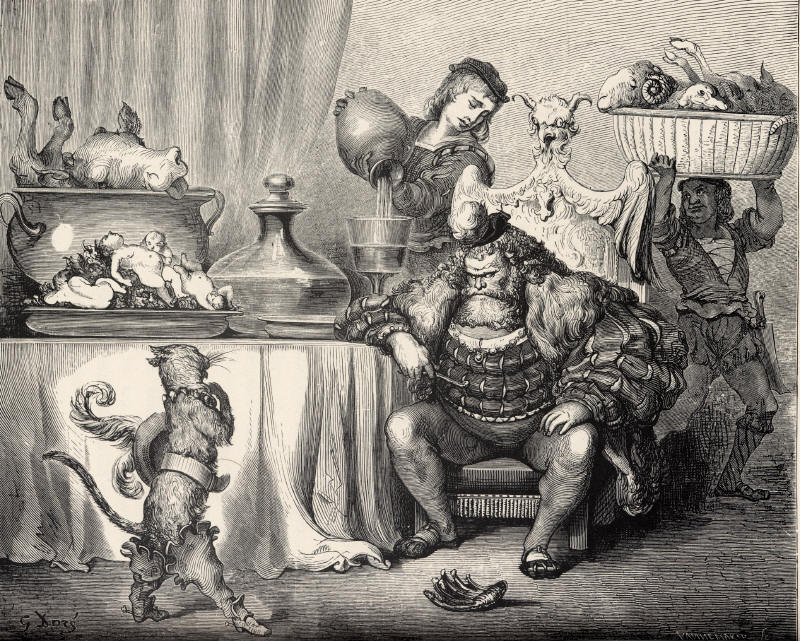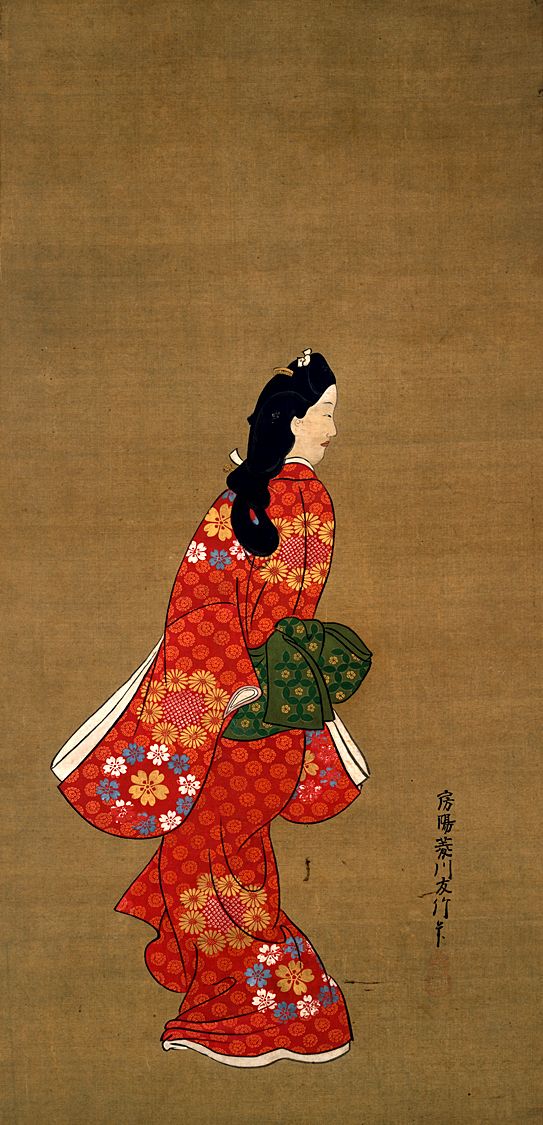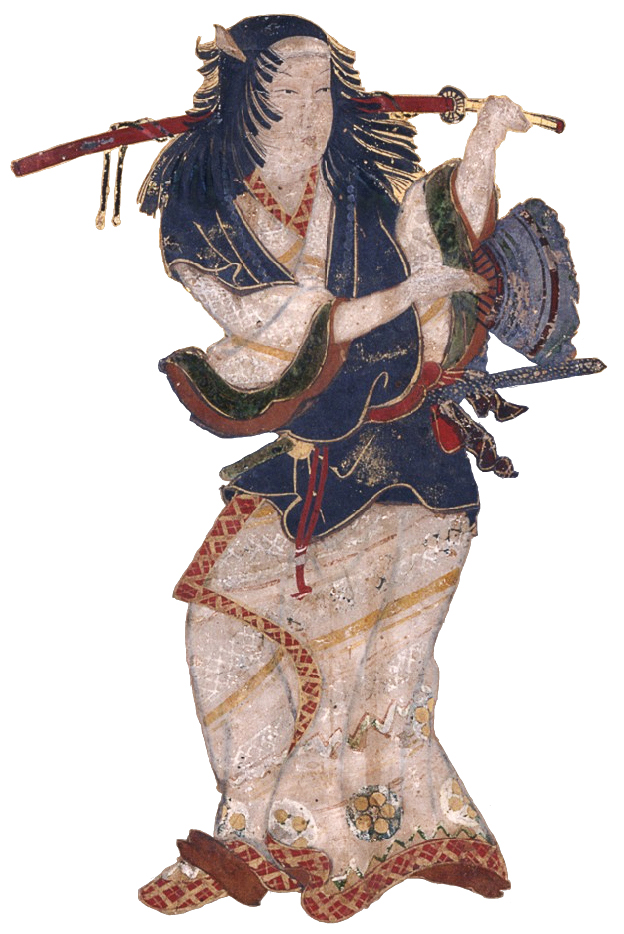|
Oni
An ( ) is a kind of ''yōkai'', demon, orc, ogre, or troll in Japanese folklore. They are believed to live in caves or deep in the mountains or in hell. Oni are known for their superhuman strength and have been associated with powers like thunder and lightning, along with their evil nature manifesting in their propensity for murder and cannibalism. They are typically portrayed as hulking figures with one or more horns growing out of their heads, massive teeth, and occasionally a third eye in the center of the forehead."Oni." ''Handbook of Japanese Mythology'', by Michael Ashkenazi, ABC-CLIO, 2003, pp. 230–233. They are typically depicted with red, blue, black, or yellow colored skin, wearing loincloths of tiger pelt, and carrying iron kanabō clubs. They also have three to six digits on each hand and foot tipped with claw-like nails. Oni are able to change their looks to fool their victims into trusting them. Oni can be male or female, but have been predominantly male thr ... [...More Info...] [...Related Items...] OR: [Wikipedia] [Google] [Baidu] |
Shuten-dōji
Shuten-dōji (, also sometimes called , or ) is a mythical ''oni'' or demon leader of Japan, who according to legend was killed by the hero Minamoto no Yorimitsu, Minamoto no Raikō. Although decapitated, the demon's detached head still took a bite at the hero, who avoided death by wearing multiple helmets stacked on his head. Shuten-dōji had his lair at Ōeyama (mountain range), Mount Ōe () northwest of the city of Kyoto, or Mount Ibuki, depending on the version. It has also been theorized that the original mountain was Ōeyama (mountain), Mount Ōe () on the western edge of the city of Kyoto. Texts The oldest surviving text of the legend is recorded in the 14th century ''Ōeyama Ekotoba'' (大江山絵詞 "Tale of Mount Ōe in Pictures and Words"), a picture scroll held by the Itsuō Art Museum. It was later incorporated into the corpus of ''Otogi-zōshi'' ("Companion tales"), and became widely read in the woodblock-printed versions of them called the ''Otogi Bunko'' (Compa ... [...More Info...] [...Related Items...] OR: [Wikipedia] [Google] [Baidu] |
Ogre
An ogre (feminine: ogress) is a legendary monster depicted as a large, hideous, man-like being that eats ordinary human beings, especially infants and children. Ogres frequently feature in mythology, folklore, and fiction throughout the world. They appear in many classic works of literature, and are most often associated in fairy tales and legend. In mythology, ogres are often depicted as inhumanly large, tall, and having a disproportionately large head, abundant hair, unusually colored skin, a voracious appetite, and a strong body. Ogres are closely linked with giants and with human cannibals in mythology. In both folklore and fiction, giants are often given ogrish traits (such as the giants in " Jack and the Beanstalk" and " Jack the Giant Killer", the Giant Despair in '' The Pilgrim's Progress'', and the Jötunn of Norse mythology); while ogres may be given giant-like traits. Famous examples of ogres in folklore include the ogre in " Puss in Boots" and the ogre in " Hop- ... [...More Info...] [...Related Items...] OR: [Wikipedia] [Google] [Baidu] |
Yamauba
, yamamba, and yamanba are variations on the name of a ''yōkai'' found in Japanese folklore. Mostly said to resemble women, yamauba may be depicted as predatory monsters or benevolent beings. Appearance Depending on the text and translator, the yamauba often appears as a monstrous crone, "her unkempt hair long and golden white ... her kimono filthy and tattered",Hearn, 267. with cannibalistic tendencies. The yamauba is said to have a mouth at the top of her head, hidden under her hair. In one story, it is revealed that her only weakness is a certain flower containing her soul. Folklore The people attacked by yamauba in folklore are typically travelers and merchants (such as ox drivers, horse drivers, coopers, and notions keepers) who often travel along mountain paths and encounter people in the mountains, so they are also thought to be the ones who had spread such tales. In one tale, a mother traveling to her village is forced to give birth in a mountain hut assisted by a se ... [...More Info...] [...Related Items...] OR: [Wikipedia] [Google] [Baidu] |
Onihitokuchi
Onihitokuchi (鬼一口) refers to a Japanese in which eat humans in one mouthful. This in turn refers to something extremely dangerous and difficult, as well as the quick and easy handling of things. Summary As an example of a representative story, in the beginning of the Heian Era, in the uta monogatari "The Tales of Ise," there is the sixth part, "." A certain man visited a woman for several years, but due to their difference in social status, they were not able to get together. One time, the man finally stole that woman, but while he was fleeing, as the night grew late, a thunderstorm came, so he found a cellar that did not fasten its doors and made the woman go in, and with a bow and arrow in his own possession, stood guard in front of the cellar, and waited for dawn. Before long, dawn came and when he peeped into the cellar, there was no figure of any woman. The woman was killed and eaten in one mouthful by an oni that lived in the cellar, and the shriek that she made when s ... [...More Info...] [...Related Items...] OR: [Wikipedia] [Google] [Baidu] |
Kanabō
The , or 'metal club') is a spiked or studded two-handed war club used in feudal Japan by samurai. Other related weapons of this type are the ''nyoibō'', ''konsaibō'', , and ''ararebō''.Mol, Serge (2003). ''Classical weaponry of Japan: special weapons and tactics of the martial arts''. Kodansha International. p. 91. Related solid iron weapons with no spikes or studs are the ''kanemuchi'' (or ''kanamuchi'') and the ''aribo'' (also known as a ''gojo'' or ''kirikobo''). Description ''Kanabō'' and other related club-like weapons were constructed out of heavy wood Wood is a structural tissue/material found as xylem in the stems and roots of trees and other woody plants. It is an organic materiala natural composite of cellulosic fibers that are strong in tension and embedded in a matrix of lignin t ... or made entirely from iron, with iron spikes or studs on one end. For wooden ''kanabō'', one or both ends could be covered with iron caps. ''Kanabō''-type weapons c ... [...More Info...] [...Related Items...] OR: [Wikipedia] [Google] [Baidu] |
Ukiyo-e
is a genre of Japanese art that flourished from the 17th through 19th centuries. Its artists produced woodblock printing, woodblock prints and Nikuhitsu-ga, paintings of such subjects as female beauties; kabuki actors and sumo wrestlers; scenes from history and folk tales; travel scenes and landscapes; Flora of Japan, flora and Wildlife of Japan#Fauna, fauna; and Shunga, erotica. In 1603, the city of Edo (Tokyo), Edo (Tokyo) became the seat of the ruling Tokugawa shogunate. The class (merchants, craftsmen and workers), positioned at the bottom of Four occupations, the social order, benefited the most from the city's rapid economic growth. They began to indulge in and patronize the entertainment of kabuki theatre, geisha, and oiran, courtesans of the Yūkaku, pleasure districts. The term ('floating world') came to describe this hedonistic lifestyle. Printed or painted ukiyo-e works were popular with the class, who had become wealthy enough to afford to decorate their homes wit ... [...More Info...] [...Related Items...] OR: [Wikipedia] [Google] [Baidu] |
Kabuki
is a classical form of Theatre of Japan, Japanese theatre, mixing dramatic performance with Japanese traditional dance, traditional dance. Kabuki theatre is known for its heavily stylised performances, its glamorous, highly decorated costumes, and for the elaborate make-up worn by some of its performers. Kabuki is thought to have originated in the early Edo period, when the art's founder, Izumo no Okuni, formed a female dance troupe that performed dances and light sketches in Kyoto. The art form later developed into its present all-male theatrical form after women were banned from performing in kabuki theatre in 1629. Kabuki developed throughout the late 17th century and reached its zenith in the mid-18th century. In 2005, kabuki theatre was proclaimed by UNESCO as an intangible heritage possessing outstanding universal value. In 2008, it was inscribed in the UNESCO Intangible Cultural Heritage Lists, UNESCO Representative List of the Intangible Cultural Heritage of Humanity ... [...More Info...] [...Related Items...] OR: [Wikipedia] [Google] [Baidu] |
Yōkai
are a class of supernatural entities and Spirit (supernatural entity) , spirits in Japanese folklore. The kanji representation of the word comprises two characters that both mean "suspicious, doubtful", and while the Japanese name is simply the Japanese transliteration or pronunciation of the Chinese term ''yaoguai, yāoguài'' (which designates similarly strange creatures), some Japanese commentators argue that the word ''yōkai'' has taken on many different meanings in Japanese culture, including referring to a large number of uniquely Japanese creatures. are also referred to as , or . However, most Japanese generally think of the two loose classes of spirits as highly different, although some academics and Shinto practitioners acknowledge similarities within the seeming dichotomy between the natures of them and most ''kami'', which are generally regarded as relatively beneficent in comparison, and class the two as ultimately the same type of spirits of nature or of a m ... [...More Info...] [...Related Items...] OR: [Wikipedia] [Google] [Baidu] |
Konjaku Monogatarishū
, also known as the , is a Japanese collection of over one thousand tales written during the late Heian period (794–1185). The entire collection was originally contained in 31 volumes, of which 28 remain today. The volumes cover various tales from India, China and Japan. Detailed evidence of lost ''monogatari'' exist in the form of literary critique, which can be studied to reconstruct the objects of their critique to some extent. Title Each tale in the ''Konjaku Monogatarishū'' starts with the phrase (lit. now long ago), which in its Japanese reading is pronounced ''ima wa mukashi''. The Sino-Japanese reading of this phrase is ''konjaku'', and it is from the Chinese-style reading that the collection is named. The ''Konjaku Monogatarishū'' is commonly known by the shorter name "''Konjaku Monogatari''". Since it is an anthology rather than a single tale, however, the longer title is more accurate. Structure The ''Konjaku Monogatarishū'' is divided according to the region of ... [...More Info...] [...Related Items...] OR: [Wikipedia] [Google] [Baidu] |
Tachi
A is a type of sabre-like traditionally made Japanese sword (''nihonto'') worn by the samurai class of feudal Japan. ''Tachi'' and '' uchigatana'' ("''katana''") generally differ in length, degree of curvature, and how they were worn when sheathed, the latter depending on the location of the , or signature, on the tang. The ''tachi'' style of swords preceded the development of the ''katana'', which was not mentioned by name until near the end of the twelfth century. ''Tachi'' were the mainstream Japanese swords of the Kotō period between 900 and 1596. Even after the Muromachi period (1336–1573), when ''katana'' became the mainstream, ''tachi'' were often worn by high-ranking samurai. History The production of swords in Japan is divided into specific time periods: * (ancient swords, until around 900) * (old swords, around 900–1596) * (new swords, 1596–1780) * (new new swords, 1781–1876) * (modern or contemporary swords, 1876–present) The predecessor ... [...More Info...] [...Related Items...] OR: [Wikipedia] [Google] [Baidu] |
Bunraku
is a form of traditional Japanese puppet theatre, founded in Osaka in the beginning of the 17th century, which is still performed in the modern day. Three kinds of performers take part in a performance: the or (puppeteers), the (chanters), and musicians. Occasionally other instruments such as drums will be used. The combination of chanting and playing is called and the Japanese word for puppet (or dolls, generally) is . It is used in many plays. History 's history goes as far back as the 16th century, but the origins of its modern form can be traced to around the 1680s. It rose to popularity after the playwright Chikamatsu Monzaemon (1653–1724) began a collaboration with the chanter Takemoto Gidayu (1651–1714), who established the Takemoto puppet theater in Osaka in 1684. Originally, the term referred only to the particular theater established in 1805 in Osaka, which was named the after the puppeteering ensemble of , an early 18th-century puppeteer from Awaji ... [...More Info...] [...Related Items...] OR: [Wikipedia] [Google] [Baidu] |
Jōruri (music)
is a form of traditional Japanese narrative music in which a sings to the accompaniment of a . accompanies , traditional Japanese puppet theater. As a form of storytelling, emphasizes the lyrics and narration rather than the music itself. History According to Asai Ryōi, the first performer to have ever employed the during his storytelling, instead of the biwa, was chanter Sawazumi. The story he narrated was , one of the many existing versions of the , which tells the tale of the tragic love between Minamoto no Yoshitsune was a commander of the Minamoto clan of Japan in the late Heian period, Heian and early Kamakura period, Kamakura periods. During the Genpei War, he led a series of battles that toppled the Ise-Heishi branch of the Taira clan, helping his half-br ... and Jōruri-hime. Following this event, every tale sung to the accompaniment of a became emblematic of the style. See also * ' References Japanese styles of music Japanese traditional music ... [...More Info...] [...Related Items...] OR: [Wikipedia] [Google] [Baidu] |









